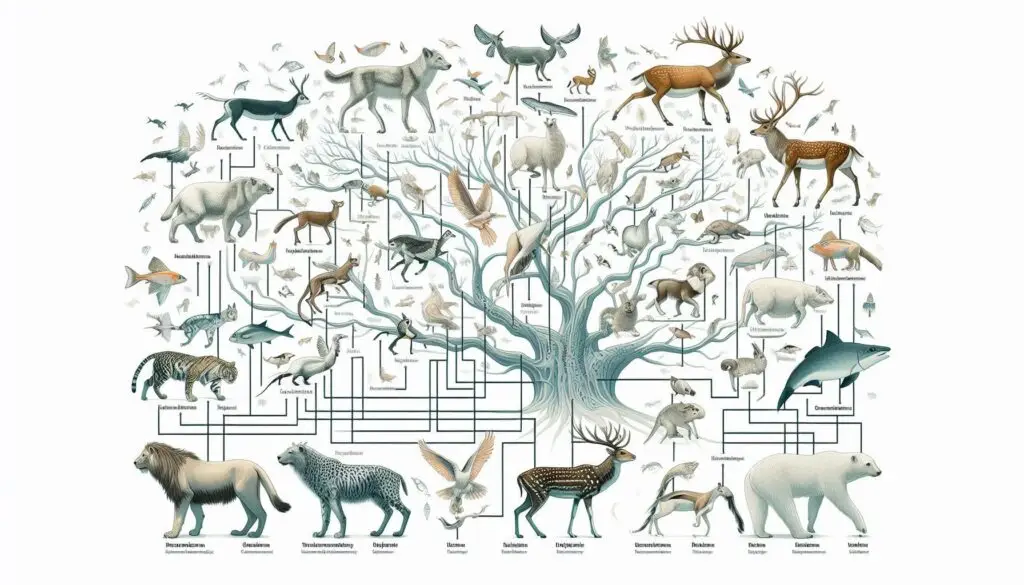Inbreeding: Phenotypic Consequences Explained

Introduction
Inbreeding occurs when closely related individuals mate. This practice can lead to significant genetic consequences. These consequences can affect not only individual organisms but also entire populations. Understanding the phenotypic consequences of inbreeding is essential for conservation efforts and breeding programs. This article explores these consequences in detail.
What is Inbreeding?
Inbreeding refers to the mating of individuals who are genetically related. This can happen naturally or through human intervention. The primary concern with inbreeding is its impact on genetic diversity.
Causes of Inbreeding
- Small Population Size: When populations become small, the likelihood of mating between relatives increases.
- Geographical Isolation: Isolated populations may have limited genetic diversity.
- Human Activities: Selective breeding in agriculture and animal husbandry can lead to inbreeding (Yoast).
Phenotypic Consequences of Inbreeding
Inbreeding can lead to various phenotypic changes. These changes can significantly impact the health and viability of organisms.
1. Inbreeding Depression
Inbreeding depression is one of the most critical consequences. It refers to reduced biological fitness due to increased homozygosity.
Effects of Inbreeding Depression
- Lower Survival Rates: Inbred individuals often have decreased survival rates.
- Reduced Fertility: Many species experience lower fertility rates when inbred.
- Higher Disease Susceptibility: Inbred populations may be more vulnerable to diseases.
Research shows that inbred individuals often struggle to compete for resources and mates. This leads to a decline in population numbers over time (Search Atlas).
2. Physical and Health Defects
Inbred populations frequently exhibit physical and health defects. These defects can vary widely across species.
Common Defects Observed
- Congenital Disorders: Higher rates of genetic disorders are common among inbred individuals.
- Fluctuating Asymmetry: This refers to minor deviations from perfect symmetry in physical traits.
- Developmental Issues: Inbred individuals may experience developmental delays or abnormalities.
For example, pedigree dogs often suffer from inherited health problems due to selective breeding practices that favor certain traits (Elegant Themes).
3. Genetic Diversity Loss
Inbreeding reduces genetic diversity within a population. This loss has long-term implications for survival and adaptability.
Consequences of Reduced Genetic Diversity
- Limited Adaptation Potential: Populations with low genetic diversity may struggle to adapt to environmental changes.
- Increased Extinction Risk: The likelihood of extinction rises as genetic diversity declines.
- Loss of Resilience: Populations become less resilient to diseases and environmental stressors.
Conservation efforts often focus on increasing genetic diversity to combat these effects (ThemeIsle).
4. Reproductive Traits Affected by Inbreeding
Inbreeding significantly impacts reproductive success across many species.
Observations on Reproductive Traits
- Smaller Litter Sizes: Many species produce fewer offspring when inbred.
- Lower Offspring Viability: The survival rate of offspring often decreases.
- Delayed Maturity: Inbred individuals may take longer to reach reproductive maturity.
Studies indicate that these reproductive challenges contribute to population declines (WPBeginner).
Examples from Nature
Several real-world examples illustrate the consequences of inbreeding on various species.
Florida Panthers
The Florida panther population faced severe inbreeding due to habitat loss. With only about 30 individuals remaining, genetic defects became prevalent. Conservationists introduced Texas panthers to enhance genetic diversity and improve health outcomes (Search Atlas).
Cheetahs
Cheetahs are another example where a historical bottleneck led to high levels of inbreeding. This has resulted in increased juvenile mortality rates and lower reproductive success (Yoast).
Pedigree Dogs
Selective breeding practices have led pedigree dogs to develop various health issues related to recessive alleles. Common problems include hip dysplasia and heart disease (Elegant Themes).
Conservation Strategies Against Inbreeding
Efforts to mitigate the effects of inbreeding focus on enhancing genetic diversity and promoting healthy populations.
1. Habitat Restoration
Restoring habitats can help increase population sizes and reduce isolation. This allows for greater gene flow between populations (ThemeIsle).
2. Genetic Management Programs
Conservationists implement genetic management strategies. These strategies involve careful monitoring and breeding practices that prioritize genetic diversity (Search Atlas).
3. Public Awareness Campaigns
Educating the public about the importance of biodiversity can lead to better conservation efforts at local levels (WPBeginner).
Conclusion
The phenotypic consequences of inbreeding pose significant challenges for many species. From reduced fitness and health defects to loss of genetic diversity, the impacts are profound. Understanding these consequences is crucial for effective conservation strategies aimed at preserving biodiversity and ensuring healthy populations for the future.
More from Genetics and Animal Breeding:
Genetic Gains: Indirect Selection and Correlated Responses






Responses